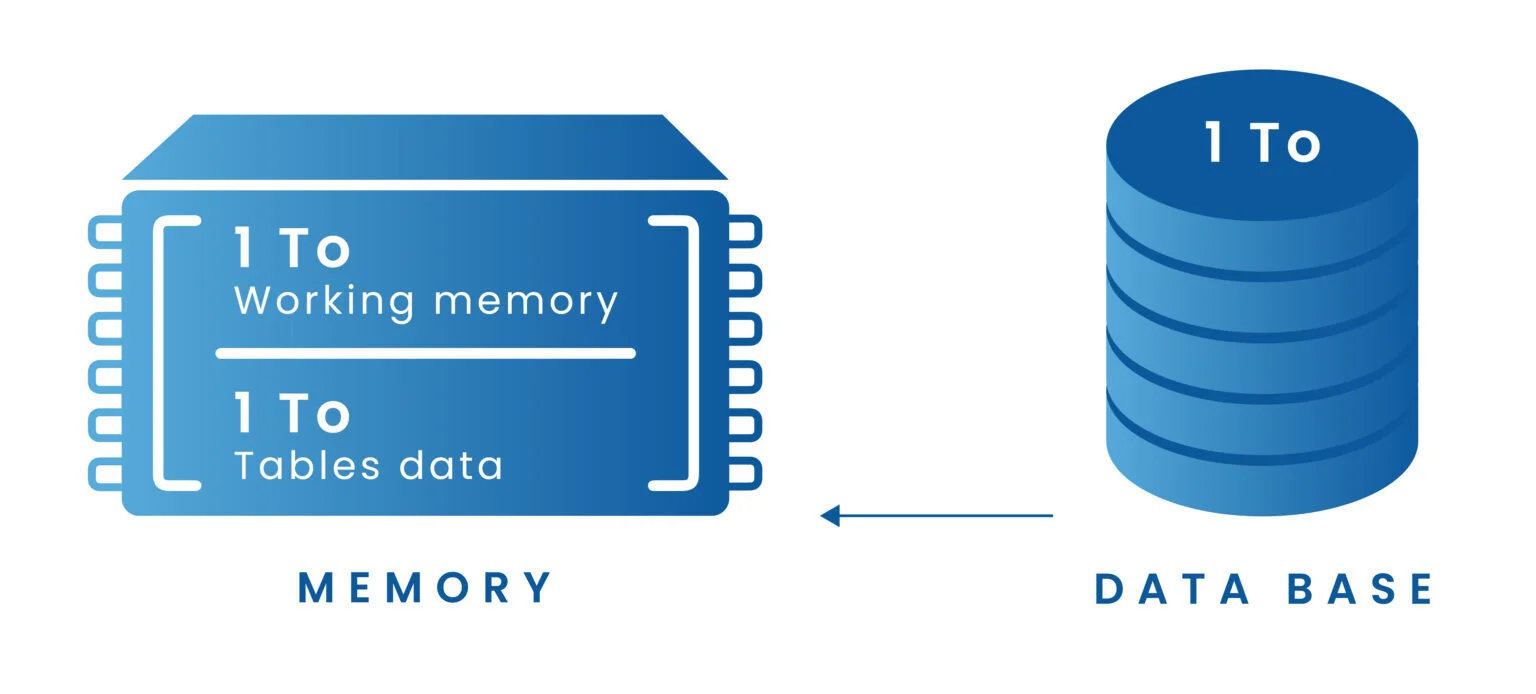L’archivage des données dans SAP est une technique puissante qui permet de traiter les données obsolètes auxquelles on accède rarement mais qui doivent rester disponibles pour répondre aux exigences fiscales, légales ou d’audit. Ces données occupent un espace précieux dans la base de données du système SAP. L’archivage des données consiste essentiellement à retirer les données de la base de données opérationnelle de SAP pour les stocker dans un référentiel d’archivage distinct, ce qui a un coût moindre.
Table des matières
L’archivage des données SAP est devenu une pratique indispensable pour les organisations qui souhaitent rationaliser leurs opérations et optimiser les performances de leurs systèmes. Mais est-ce tout ? Est-il vraiment avantageux d’adopter des pratiques d’archivage des données dans SAP ? Dans cet article, nous allons mettre en lumière quelques raisons importantes de mettre l’accent sur l’archivage régulier des données dans SAP, en discutant des avantages qu’il apporte.
Avantages de l’archivage des données dans SAP
L’archivage des données SAP permet non seulement de renforcer l’efficacité du système, mais aussi de sauvegarder des données historiques précieuses, en veillant à ce que les entreprises respectent la conformité et aient accès aux informations essentielles en cas de besoin. En gérant de manière transparente le flux et le reflux des données, l’archivage des données SAP devient un élément essentiel de la promotion d’une stratégie de gestion des données rationalisée et résiliente. Vous trouverez ci-dessous quelques-uns des principaux avantages qu’il offre.
1. Réduire les besoins de stockage des données
L’un des avantages immédiats de l’archivage des données SAP est la réduction significative des besoins en stockage de données. En supprimant de manière sélective les données inactives, les entreprises peuvent libérer un espace de stockage précieux dans la base de données, ce qui leur permet d’économiser sur les coûts de stockage. Ceci est particulièrement crucial si votre organisation a déjà migré vers SAP S/4HANA. La mémoire HANA a un prix élevé, c’est pourquoi il est fortement conseillé de contrôler la taille de la base de données.
Il y a quelque temps, cet article comparait deux entreprises aux approches radicalement opposées : l’une ayant mis en place un programme d’archivage automatisé des données et l’autre n’ayant pris aucune mesure. Avec un taux de croissance estimé à 4 To/an, une entreprise double généralement son volume de données tous les trois ans. Si l’on n’y prend pas garde, les volumes de données peuvent facilement s’envoler et devenir un fardeau énorme pour le fonctionnement de l’entreprise et un terrible casse-tête pour les responsables informatiques. Consultez la comparaison complète dans cet article: Gestion du volume de données – quel est l’effet de l’inaction ?
2. Éviter la saturation de la mémoire HANA
Dans SAP S/4HANA, l’évolutivité de la mémoire HANA est faible, ce qui signifie qu’une fois la capacité maximale atteinte, il n’est pas facile de passer au niveau supérieur. L’archivage régulier des données permet d’optimiser l’espace mémoire en archivant les anciennes données qui n’ont pas besoin d’être stockées dans la mémoire.
Pour en savoir plus sur le fonctionnement et la gestion de la croissance des tables : Mémoire HANA Base de données HANA : Comment maîtriser la croissance des données | SAP Data Management.

3. Amélioration des temps de réaction et des performances du système
Comme le volume de données dans le système diminue grâce à l’archivage, les temps de réaction globaux et les performances du système s’améliorent considérablement. L’extraction et le traitement des données deviennent plus rapides, ce qui se traduit par un environnement SAP plus réactif et plus souple. La réduction des volumes de données améliore également la cyber-résilience, en accélérant la récupération des données en cas de cyber-attaque. Cet aspect est particulièrement important pour les organisations dont les processus d’entreprise sont complexes et qui disposent de vastes ensembles de données.
4. Réduction des délais de migration
L’équation est simple : plus il y a de données, plus le temps de migration est long. Dans le cas de la migration de données vers le nuage ou vers un nouvel ERP, ou vers SAP® S/4HANA, une base de données plus légère se traduira par des temps de migration plus courts. Comme le lecteur le sait, les délais de migration des données vers le cloud tendent à être assez courts, un système plus léger sera donc très bénéfique. L’article suivant souligne l’importance de l’archivage des données SAP lors de la migration vers S/4HANA si vous souhaitez en savoir plus sur le sujet.
5. Avantages pour l’environnement
Un avantage souvent négligé et pourtant significatif de l’archivage des données dans SAP est son impact positif sur l’environnement. Les organisations réduisent indirectement leur empreinte carbone en diminuant le besoin de stockage des bases de données. L’équation est simple : moins de données nécessitent moins de stockage, ce qui se traduit par des économies d’énergie et une approche plus durable de la gestion de l’information.
Pour en savoir plus, consultez cet article : Archivage des données SAP : Un moyen de réduire l’empreinte carbone
6. Meilleure disponibilité du système
L’archivage régulier des données contribue à accroître la disponibilité du système en minimisant les temps d’arrêt lors des mises à niveau et des versions. Le processus permet des transitions plus fluides entre les différentes versions de SAP, réduisant ainsi le risque de perturbation des opérations en cours. Cela permet de maintenir la continuité des activités et d’assurer une prestation de services ininterrompue.
Récapitulation
L « archivage régulier des données dans SAP n’est pas simplement une pratique informatique de routine ; c’est une pratique cruciale pour les organisations qui veulent rester agiles, efficaces et respectueuses de l’environnement. L’adoption de l’archivage des données SAP offre des avantages tangibles, qu’il s’agisse d » économies, d’amélioration des performances ou de réduction de l’impact sur l’environnement.
Lorsqu’il s’agit de mettre en œuvre des solutions d’archivage de données robustes dans SAP, TJC Group se distingue comme un partenaire de confiance avec des décennies d’expertise dans le domaine. De plus, le Cockpit Sessions d’Archivage est la seule solution certifiée SAP qui automatise les tâches d’archivage de données, ce qui porte les avantages à un niveau supérieur.
Selon les termes de notre client, “l’automatisation est la grande victoire. Essayer d’archiver des données sans cela, c’est un peu comme mettre quelqu’un dans une roue de hamster, c’est un travail difficile. Il est logique d’utiliser l’automatisation. Une fois que vous l’avez mis en place et qu’il fonctionne, c’est un processus automatisé, il est là”, déclare Mark Holmes, architecte principal chez British Telecom.










